Once again about Matvey Ivanovich Platov
The life and military exploits of one of the talented students of the Suvorov school, the hero of World War 1812, Matvey Ivanovich Platov, are a wonderful page of military stories and still serve as lessons of courage, patriotism and high military skill. Matvey Ivanovich took part in all the wars of the Russian Empire of the end of the XVIII - beginning of the XIX century. For the Cossacks, Platov was the personification of Cossack valor, loyalty to the Fatherland, and readiness for self-sacrifice. The memory of Platov is repeatedly immortalized in the names of squares and streets, educational institutions and ships. However, it is practically unknown to the modern generation.
Matvey Ivanovich Platov was born on August 8 1753 in the village of Pribylyanskaya (Starocherkasskaya) in the family of a military foreman. His parents were not well-off and were able to give his son only primary education, having taught Russian reading and writing. In 13 years Matvey Platov began serving in the Cossack army. The blue-eyed, tall, stately, dexterous, unusually mobile young man very soon won the respect of his colleagues by his good-natured character, sociability and sharp mind. Matvey perfectly kept himself in the saddle and owned all the Cossack techniques of horse-riding, he skillfully used lance, superbly owned a saber, aptly shot from a bow, a gun and a pistol, not bad used a lasso. In 19 years, Matthew Platov was made an officer (captain) and given command of a hundred, in 20 years - a regiment.
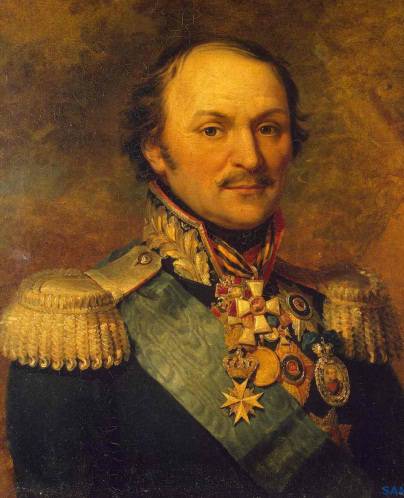
In January 1781, Platov was appointed chief assistant to the military ataman of the Don Cossack army, and soon Matvey Ivanovich himself became the military ataman. In 1806-1807 Platov participated in the war with France, in 1807-1809 - with Turkey. He skillfully led the Cossack troops under Preussis-Eylau (1807) and on the Danube theater of operations. For this, in 1809, he was given the rank of cavalry general. In the difficult for Russia 1812 year, Platov commanded all the Cossack regiments on the border, and then a separate Cossack corps covering the withdrawal of the 2 of the Western Army, successfully fought under Borodino, Smolensk, Vilna, Kovno, skillfully acted in the battles of 1813-1814. He enjoyed enormous prestige among the Cossacks and was popular and respected in Russia and Western Europe. In 1814, being part of the retinue of Alexander I, M.I. Platov participated in a trip to England, where he was given a solemn meeting and was given a diamond-encrusted saber, as well as an honorary doctorate from the University of Oxford. Platov's merits not only in the exploits on the battlefield, but also in the fact that he made a significant contribution to the further improvement of the traditional forms and methods of warfare that took shape in the previous period of the history of the Cossacks.
In order to understand how Matvey Ivanovich Platov was a man and a warrior, let us cite several episodes from his combat activities.
Kalallah fight
On a warm April night, 1774, Platov, listening to the ground, listened to a distant rumble. As it became clear later, the numerous cavalry of the Crimean Khan Davlet-Girey was approaching, who managed to find out that the 2 Russian army, stationed in the Kuban, was being transported with food and ammunition, heavily guarded by two Cossack regiments (500 people each) with one gun, and that the regiments commanded by the camp colonels Larionov and Platov stopped for the night at the Kalalah river.
Platov woke Larionov, a senior and more experienced commander. After consulting, they ordered the Cossacks to arrange on one of the heights by the river a kind of field fortification, drive their horses inside, make a shaft of carts and sacks with food, and take up all-round defense. At dawn, the Cossacks saw that from three sides, they were surrounded by many times superior enemy forces. Larionov was not a timid man, but, realizing that resistance was useless and that they all would die in an unequal fight, offered to surrender. Platov, deeply insulted by his words, exclaimed: “We are Russians, we are Donors! Better to die than surrender! Our ancestors always did this! ”He took command of both regiments, sent two horseback hundreds to meet the enemy, and gave two efficient Cossacks the task of breaking through to lieutenant colonel Bukhvostov, who was stationed with regular troops on the opposite shore. One of the sent Cossacks at full gallop was hit by a bullet, the other used a trick: he knocked over and hung at the side of the horse, pretending to be killed, and then, when the danger had passed, he jumped into the saddle, rode up to the river, swam it and safely reached Bukhvostova camp.
Meanwhile, the Cossack hundreds sent to meet the enemy reached its advanced units and suddenly turned back. The Khan's cavalry rushed after them in pursuit. The Cossacks, having approached their field fortification, divided into two parts at a signal and turned in opposite directions. Thus, the enemy was under the gun and graf fire defending the camp. Confused by this surprise, the Krymchaks began to retreat in disarray, losing several dozen soldiers and horses on the battlefield. This technique (“trap”) in various versions and on a larger scale, Platov repeatedly used subsequently against the Turkish and French cavalry and, almost always, with success.
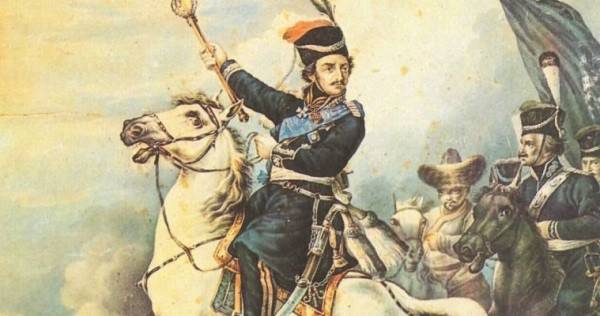
The first attack was repelled. Others followed. Davlet Giray threw more and more power into battle, but could not achieve success. Seven times he tried to seize the height held by the Cossacks, and always rolled back. The Cossacks resisted fiercely and stubbornly the whole day, but their forces melted, many were killed, wounded, a third of the horses fell, the ammunition ran out. Platov encouraged his warriors as best he could, appearing on the most dangerous directions. Nevertheless, some of the defenders began to lose heart. Larionov, who courageously fought, again spoke to him about surrender, in order not to kill people in vain. But Platov was unmoved. He replied: “Honor is more precious than life! .. It is better to die than to put weapon... ".
Meanwhile, the enemy was going to attack the positions of the Don for the eighth time. Anxiously awaited the exhausted Cossacks of the new and, apparently, the most decisive attack. At that moment a cloud of dust rose on the horizon. Among the defenders there was a jubilant shout: “Ours! Ours! ”Platov saw the lava of galloping horsemen with darts at the ready: Lieutenant Colonel Bukhvostov sent Uvarov's regiment to strike the flank and enemy rear, and with the main forces intended to strike from the other flank. Those besieged with joy began to throw up their hats, cuddle, shout “Hurray!”. Many had tears in their eyes. With an undisguised sense of relief, they watched as the Cossacks of Uvarov, with a loud cry and hooting, promptly crashed into the enemy ranks.
Without losing time, Platov commanded the survivors: “On horseback!” - and rushed with them to the enemy from the front. The enemy army trembled, mixed up, and finally began to withdraw. Pursued by the Don team, cavalry Davlet-Girey came across the main forces of Lieutenant Colonel Bukhvostov, who met them with a canister. Surrounded on all sides, the enemy was defeated and scattered.
In a subsequent report to the ataman, the troops of the Don Semyon Nikitovich Sulin about the fight on the Kalalah river lieutenant colonel Bukhvostov wrote: "Platov was brave and courageous: he encouraged his subordinates, led them to resist the enemy to resist - and thus kept them from abducting the enemy ... Uvarov approached the enemy with me, attacking him strongly, struck several infidels: through what best we could connect with the besieged, and by combining all we punished the treacherous with common forces. Lieutenant Colonel and Chevalier Bukhvostov. April 7-th day 1774 year in the Kuban at p. Kalalah.
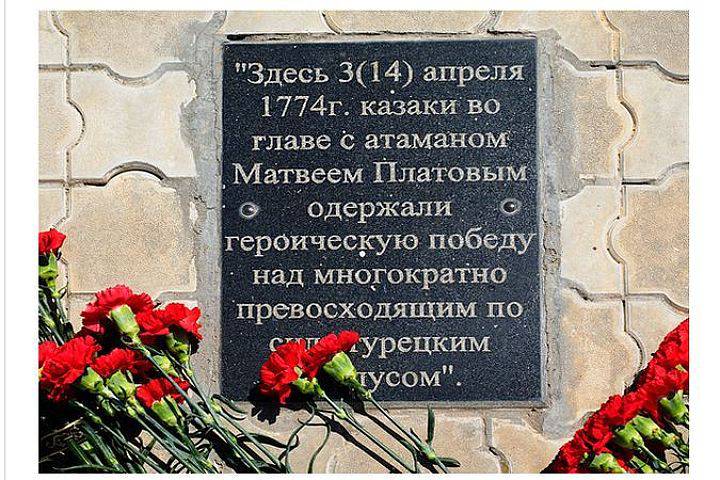
The Don army, the regular army, the court, the empress Catherine II learned about the extraordinary feat of the Cossacks Matvey Platov, his personal courage, presence of mind in moments of danger, irresistible resilience and scrupulousness. By order of Catherine II, for all Cossacks - participants of the battle, a gold medal was knocked out at the height of the Kalalah river. The battle of Kalallah was the beginning of the brilliant military glory of Matvey Platov.
Assault Ishmael
December 9 The 1790 of the year before the assault of Ismail Suvorov appointed a meeting of the military council. One by one, Lieutenant-General Pavel Potemkin and Alexander Samoilov, major generals Mikhail Golenishev-Kutuzov, Peter Tischev, Fyodor Meknob, Ilya Bezborodko, B.P. Lassi (Lassius), Joseph de Ribas, Sergey Lvov, Nikolay Arsenyev, foremen Fedor Westfalen, Vasily Orlov, Matvey Platov.
Suvorov addressed the audience with a brief expressive speech: “Twice the Russians approached Ishmael — and they retreated two times; now, for the third time, it remains for us only to take the city, or die! ” Carefully looking at all the members of the military council, he continued to give everyone his opinion, and left the tent.
According to the tradition established by Peter I, Platov, as the youngest in rank and position, was to voice his opinion first. The young Cossack chieftain thought deeply. Thoughts, overtaking one another, flashed through his head. He weighed all the pros and cons. Ishmael is a serious fortress. High shaft, deep moat. The city has many stone houses that are convenient for defense, a garrison - 35000 people, of which eight thousand are cavalry. Select army. 265 guns, not counting Turkish cannons flotilla. The garrison commander Aydos-Mehmet Pasha is an experienced general. And what about the Russians? A total of 31000 fighters. Nobody had yet to take fortresses with less than the enemy’s strength. True, there are more guns, but there are not enough people for such an assault. Cossacks will be especially hard. They, trained in dashing equestrian attacks in the open, must climb stairs to the impregnable walls with destructive artillery fire with stairs and fascines in their hands. And their weapons - wooden peaks - are unsuitable for hand-to-hand combat. Losses will be great. And yet, Ishmael must be taken now. A prolonged siege, and even in the winter, will take no less people to the next world. From cold, hunger and disease, people will die in thousands. And if you lose the soldiers, then in battle. And the Cossacks will survive. Although most of them have never participated in the storming of fortresses on foot, they don’t take courage. The leader of the troops, Aleksandr Vasilyevich, seems to be determined to take Ishmael by force of arms, although Potemkin in the last dispatch provided Suvorov with his discretion.
Experienced Suvorov hardly sought advice. He needed support ... Platov’s thoughts were interrupted by Suvorov, who promptly entered the tent. Eyes chieftain flashed. He jumped up, said loudly and resolutely: “Storm!” Everyone joined him in unison. The Cossack chieftain approached the table and, under the decision of the military council on the assault on Ismail, first put his signature: “Brigadier Matvey Platov”.
According to the disposition of Suvorov, the attacking troops were divided into three groups (detachment) of three columns in each. The detachment of the future founder of Odessa, Major General de Ribas (9000 people) was to attack from the river side; the right squad commanded by lieutenant-general Pavel Potemkin (7500 people) was intended to strike from the west, the left - by lieutenant-general Alexander Samoilov (12000 people) from the east. Attacks of the right and left units ensured the success of the strike by de Ribas from the south, riverine side.
The Don Cossacks, who had lost their horses during the siege of Ochakov in 1788, were brought to foot shelves and sent to assault columns. Platinum's 5-th column (5000 people) was to ascend the rampart through a ravine that separated the old and new fortresses, and then assist in the landing of a landing force from the flotilla and jointly master the new fortress from the south. The 4 th column of the brigadier Orlov (2000 Cossacks) was assigned to attack the shaft east of the Bender Gate and to support Platov. The column of Matvey Ivanovich consisted of 5-ti battalions. The battle formation was built in two echelons: in the first three battalions equipped with fascines and ladders, in the second - two, combined in one square. In front of each column of the first echelon, 150 well-aimed shooters (snipers) and 50 warriors with a trench tool moved.
Early in the morning of December 11, 1790, the columns went on the attack. It was dark, the sky was covered with clouds, a thick fog obscured the approach of the Russians. Suddenly the thunder of hundreds of serf guns and ship cannons of the Turkish flotilla broke the silence. Platov's battalions, without losing order, quickly approached the moat, dropped fascines into it, then, overcoming obstacles, hurried to the rampart. At its base, the Cossacks put up the stairs, rapidly climbed up, and, relying on the shortened darts (spikes), climbed to the very crest of the shaft. At this time, the arrows remaining below hit the defenders of the shaft with fire, locating them by the outbreaks of shots.

Orlova’s column reached the moat on the left side of the Bender Gate, and its part had already climbed the ladder, the rest were still on this side of the moat. Bendery gates suddenly opened wide and a large detachment of Turks swiftly rolled into the ditch and, passing along it, struck the flank of the Cossack column, threatening to divide it. Hot hand-to-hand fight erupted. At this time, the battalion in which Platov and the commander of the two columns, Major General Bezborodko, were, approached the fortress through a hollow between the old fortress and the new one. The moat in this place was flooded. The Cossacks lingered. Then Platov was the first to plunge into ice-cold water, overcame this obstacle. The example of the commander was followed by others. After the warriors climbed onto the rampart, the young ataman led them to the attack and took possession of the Turkish cannons standing there. During the attack, General Bezborodko was wounded, and he was carried out of the battlefield. The command of both columns took Platov.
Hearing loud cries and the noise of the battle on the right, Platov ordered Colonel Yatsuneky, the commander of two battalions of the Polotsk Musketeer Regiment, which made up the reserve of both Cossack columns, to strike with bayonets of the Janissaries. At the beginning of the attack, the colonel was mortally wounded. Platov, coordinating the actions of his column with the battalions of the Polotsk regiment, the battalion of the Bugsky rangers sent by Kutuzov to the rescue of the neighbors, and also interacting with the dedicated Suvorov cavalry, helped the brigadier Orlov to repulse the attack of the janissaries. Most of them died, and the survivors rushed into the fortress, firmly closing the gate behind them. Then Platov assisted Orlov in mastering the shaft. After that, a part of the Cossacks, through a hollow, penetrated to the river and joined up with the landing party of Major-General Arsenyev.
The coming dawn dispelled the fog. It became clear that the shaft was taken by the Russians throughout its length. After a brief rest, the Cossacks, lining up in columns, moved to the city with peaks to the city, whose narrow streets were filled with Turks. Janissaries sat in stone houses and mosques. Everywhere shots thundered. Almost every building had to be taken in combat.
By 4 watch, Ishmael was already completely in the hands of Suvorov soldiers. The defeat of the whole army, located in an impregnable fortress, shook not only the Turkish Empire, but also Europe. He had a significant impact on the further course of the war and eventually led to the conclusion of peace in 1791. The assault participants were awarded: the lower ranks with silver medals, and the officers with gold marks. Many officers received orders and golden swords, some were promoted. Matvey Platov was granted the Order of George III degree and the rank of Major General.
Battle of Borodino
26 August 1812 of the year. Borodino battle in full swing. After eight attacks at the cost of significant losses, the French troops managed to capture Bagration flash. In an effort to complete the breakthrough of the Russian positions, Napoleon focused his main efforts on the Rayevsky battery. There were assembled for a decisive attack by a 35000 man and some 300 guns.
The French marshals urgently demanded the introduction of the remaining intact reserve - the old and young imperial guards (27 thousand selected troops). Napoleon replied that three thousand versts from France he could not risk his last reserve. Marshals insisted. Insisted retinue. The murmur was growing. Time passed, and it was necessary to undertake something. The emperor ordered a young guard to be sent into battle, but immediately canceled his order, since Kutuzov threw out the cavalry corps of Platov and Uvarov, who were in reserve, bypassing the left French army and they suddenly attacked Napoleon's troops in the area of the villages of Valuyevo and Bezzubovo.
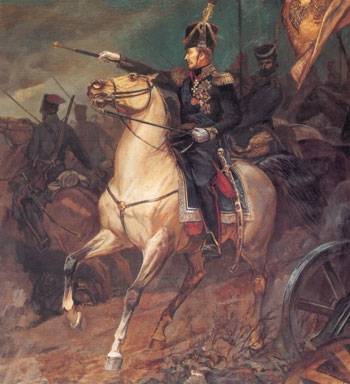
The Cossack corps of Ataman Platov and the 1 th cavalry corps of General Uvarov, around noon, forcing the river Koloch ford, rushed to the French. Uvarov led his cavalry to Bezzubovo, where the Napoleon regiment of infantry and the division of Italian cavalry stood. The Italians galloped off without taking the fight, and the French, rebuilding themselves in the square, blocked our cavalry’s way, taking the mill dam - the only narrow passage to the village. Uvarov's cavalrymen went over to the attack several times, but did not succeed. Finally, having suffered significant losses, they managed to press the French to the western outskirts of the village, but could no longer develop success.
Platov with the Cossacks unobstructed walked around Toothless from the north. But what to do next? To hit the rear of the enemy infantry regiment and help Uvarov defeat him? It will take time, and the result will be small. Attack the infantry division at Borodino? It is useless - too unequal forces. And Platov makes a decision: to cross another river - the War, to go deep into the French rear and to begin smashing the enemy transports. His calculation was correct - a panic arose in the rear of Napoleon's troops. The wagons and individual commanders on horseback with chopped off lines were rushed, pursued by the Cossacks, towards the location of the main forces. Some of them with loud cries: “Cossacks! Cossacks! ”Rode to the Shevardinian redoubt, on which the emperor was with his retinue. Almost at the same time he was informed that the Russians were attacking Toothless. All this had a stunning effect on Napoleon. He detained the young guard, stopped the attack on the Rayevsky battery, sent part of his troops to the left flank and, moreover, personally went there to accurately assess the situation. About two hours so precious in the battle of time was lost, while Napoleon was able to make sure that the number of Russian cavalry attacking his left flank was small. In addition, Platov and Uvarov had orders from Kutuzov not to get involved in a battle. Kutuzov had already achieved his goal, winning the time he needed.
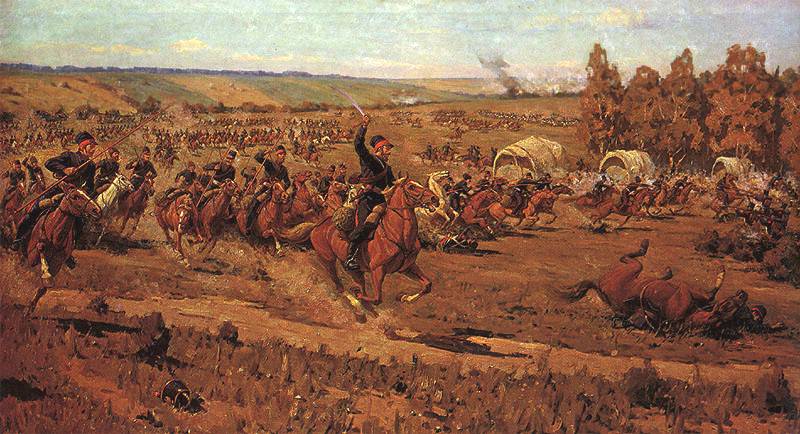
Why did the attack of the Cossacks Platov on the left flank frighten Napoleon so much? What made the emperor interrupt the offensive in the main direction and cancel the entry of the young guard into battle? Why did he send additional parts to the left flank, and he himself rushed there, losing so much time? Everything is explained simply: the emperor was afraid of losing the transports with ammunition there, whose loss could turn into a catastrophe for the entire French army.
The Kutuzov time gain decisively influenced the outcome of the battle of Borodino, as the commander-in-chief of the Russian army managed to regroup, strengthening the center and left wing of his troops with the 2 and 3 corps. Although the French captured the Raevsky battery after the resumption of attacks, they were no longer able to build on their success. The emperor did not dare to move the last French reserve into battle.
The end of the battle of Borodino is known. Napoleon did not achieve victory in the general battle and led the troops to their initial positions. Kutuzov had every reason to be pleased with the results of the actions of the cavalry on the French left flank, especially the Cossacks of Platov.
Many other feats were committed by the M.I. Cossack army. Platov in the period of World War 1812 of the year and in the campaigns 1813-1314. M.I. Kutuzov praised the heroic actions of both Ataman Platov and the Cossack regiments led by him. “The services rendered by you to the fatherland ... do not have examples! - he wrote M.I. Platinum 28 January 1813. “You have proved to the whole of Europe the power and strength of the inhabitants of ... blessed Don ...”
Merit M.I. Platov were appreciated in due time. He was awarded: the Order of Alexander Nevsky with diamonds, Andrew the First-Called, of sv. George II degree, of. Vladimir I, John of Erusalim, a Commander's Cross, an Austrian Mary of Terezny of the III degree, a Prussian Black and Red Eagle 1 degree, a portrait of an English prince regent, and a saber adorned with diamonds, with the inscription “For Bravery” (from Catherine II), a diamond pen on his hat, gold medals for the battle at the Kalalah river, the assault of Ishmael, for feats in the Patriotic War 1812 of the year.
MI died. 3 January January 1818, 65 years old. In the city of Novocherkassk, he erected a monument with the inscription "Grateful Don - to his Ataman". In honor of Platov several medals were struck: gold (1774), two tin (1814), as well as tokens and medallions with his portraits, made in Russia and abroad.
Sources:
Astapenko M., Levchenko E. All Russia will be remembered. The historical narrative of M. I. Platov M .: Young Guard, 1986. C. 16-39, 75-118
Astapenko M. Ataman Platov: historical narration. Rostov-on-Don: Hephaestus, 2003. C. 87-143.
Venkov A. Ataman Troops Don Platov. M .: Veche, 2008. C. 283-312.
Frantsev O. Matvey Ivanovich Platov. // visage 1980. No.10. C.40-46
Kotov V. Ataman "Whirlwind". M.I. Platov. // Around the world. 2002. No.1. C. 44-48.
Lesin V. Ataman Platov. - M .: Young Guard, 2005. C. 23-84.
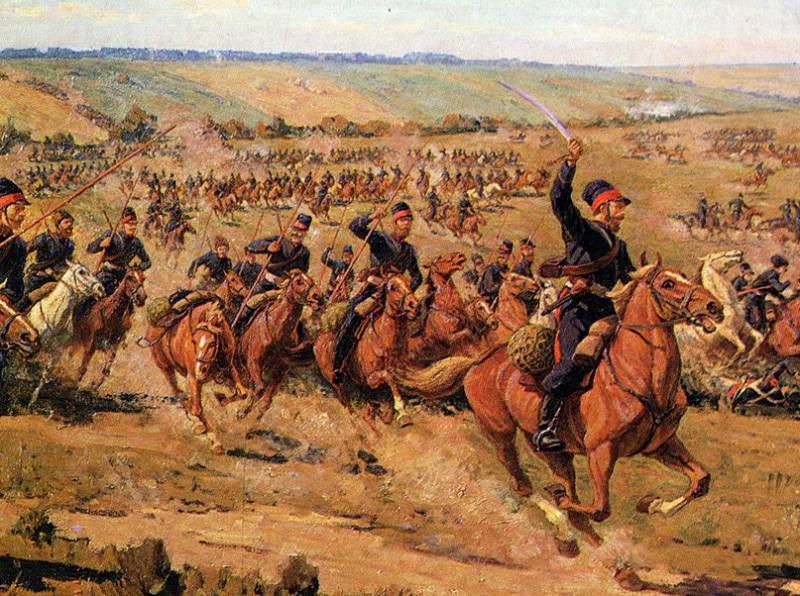
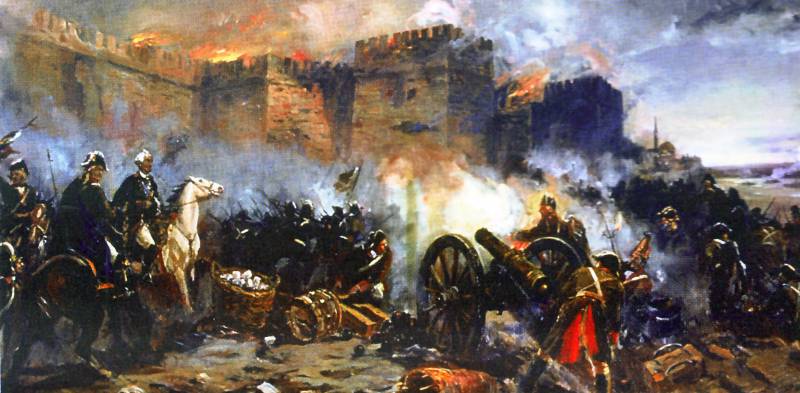
Information